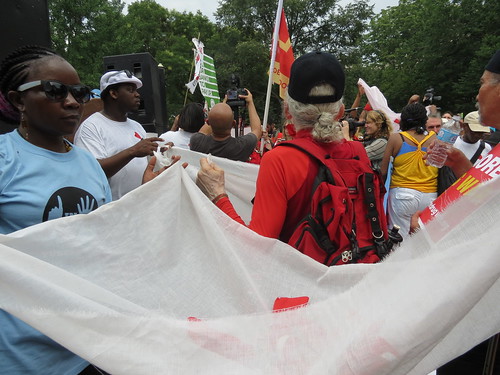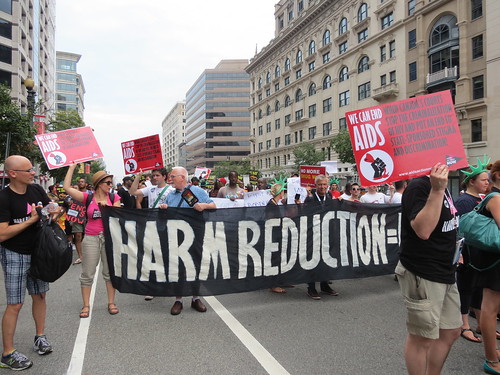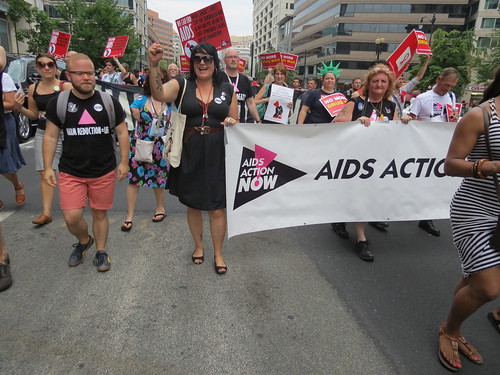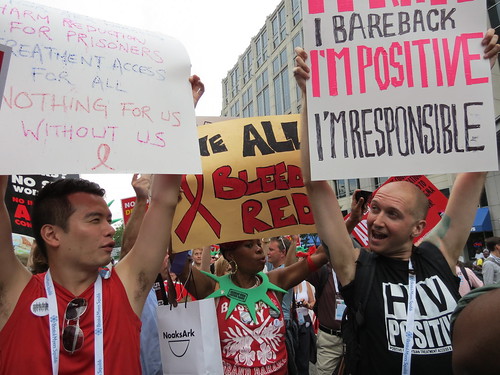Today the Supreme Court of Canada cemented Canada’s position as the world-leader in the criminalization of people living with HIV. We want to focus our first post on the negative impact of the decision on women living with HIV.
“If you ever leave me,” he says, “This is what I’ll do to you. I will take you to court. And I will tell them that you infected me…” Aboriginal Woman Living with HIV, Our Search for Safe Spaces: A Qualitative Study The Role of Sexual Violence Among Aboriginal Women Living with HIV. Vancouver, BC: Canadian Aboriginal AIDS Network, 2009.
HIV non-disclosure is a women’s issue and a feminist issue and an issue for all concerned with health and human rights. Violence against women is the same type of issue. Today, the next chapter was written in the cautionary tale of what happens when entrenched privilege and ideas about what is means to “protect women” set the agenda for marginalized, highly stigmatized people. The Supreme Court of Canada delivered two landmark rulings about HIV, and the criminal law. Central to these rulings was a discussion about protecting the rights of women to be free from violence and coercion . The two cases are DC and Mabior; click on the links to go to the Court’s reasons for decision.
The question the Court looked at was: Under what circumstances does a person living with HIV have an obligation under the criminal law to disclose their HIV status to a sexual partner? The focus was on sexual intercourse, condoms, and low or undetectable HIV viral load. The Court decided that there is a new test in the land as of today: If the sex carries a realistic possibility of HIV transmission, then the HIV-positive person has a duty to disclose. The Court provided some guidance about the meaning of realistic possibility—if the person living with HIV has a low viral load and uses a condom, there is no realistic possibility of HIV transmission and they have no criminal law duty to disclose. But the vague language of realistic possibility opens the door for more prosecution and persecution of those living with HIV. The decisions have done nothing to address the realities facing people, and in particular women, living with the disease.
Sexual assault lies at the heart of the he criminal law applied to people living with HIV who allegedly do not disclose. Sex without consent is a crime—what exactly consent means in the context of HIV-positive people having sex is defined in relation to the risk of HIV transmission involved with the sex. HIV-positive people are most often charged with aggravated sexual assault—maximum penalty of life imprisonment, plus registration as a sex offender. You got it right, sexual assault law, the same law applied to violent, coerced, forced sex—to rape. With the same penalties. But with much higher rates of conviction for HIV non-disclosure than other prosecutions for sexual assault. And let’s be clear, people like DC and Mabior were convicted without ever transmitting HIV to their sex partners. Even putting someone at risk of HIV transmission is a crime, not just transmitting HIV.
Although sexual assault law was put in place to protect women-who have historically borne and continue to bear the overwhelming burden of sexual violence-today’s decision will likely lead to increased violence toward women who live with HIV. It will likely also prevent them from accessing HIV testing, treatment, services and supports.
When it is safe to do so, the vast majority of people living with HIV disclose their status to their partners, or take steps to effectively protect their partners from HIV transmission. However, imbalances in power relationships between men and women, including between men and transgendered women, make it more difficult for women living with HIV to consistently disclose their status or to negotiate safer sex practices with their male partners. Negotiating condom use is particularly difficult as it requires explicit consent and cooperation of men. Women are vulnerable to violence if they do not concede to the sexual desires of their male partners. Violence against women is also associated with disclosing HIV status. Men have used criminal allegations against women living with HIV as a weapon of abuse, which pushes them further away from justice, autonomy, and safety. The Supreme Court’s decision in Mabior has given abusive men a more powerful tool to coerce, control and to trap in abusive relationships women living with HIV.
One of the two cases the Supreme Court decided today involved criminal charges against a Quebec woman, known by her initials DC. DC and her son were beaten up by her common law spouse, as their live-in relationship was coming to an end in 2004. He was charged, sent to trial, convicted, and got off with a light sentence because …. Guess what he did? He called the cops and told them that DC had not disclosed her HIV status to him the first time they had sex, four years before he beat her up. And he said no condom was used. Guess who the cops believed? Guess who the trial court judge believed? You got it. DC was arrested in 2005, and convicted in 2008 after a trail. She has been fighting ever since to clear her name. Today the Supreme Court did that, by saying the trial judge was ham-fisted in the way he weighed and assessed the evidence about whether a condom was used. The Supreme Court tied itself in a knot to find a technical legal ground for acquitting DC. We are sure that this “victory” doesn’t start to make up for the nightmare DC and her family have suffered for close to 8 years now.
But that’s not all the Supreme Court did today. If the DC case was to start all over tomorrow, we are pretty sure that she would find herself in the very same situation as she did back in 2005. Having to defend herself against her abusive ex-spouse’s charges, hounded by gung-ho police, and persecuted by Crown prosecutors bent on enforcing, to the harshest degree, laws designed to protect women from male violence. Ironic doesn’t even begin to describe this situation. Unjust? Unconscionable? Outrageous miscarriage of justice?
Wait, it gets “better” for women under this decision, under the guise of protecting women’s equality, autonomy, and right to choose with whom they will have sex and the circumstances of that sex. By our reckoning, DC would be in a worse position under the new test set out by the Supreme Court. Under the old test, a number of Canadian courts of appeal had decided that people should not go to jail if their HIV viral load was low or undetectable, or if they used condoms. One or the other—not both. In fact, the Quebec court of appeal acquitted DC because her viral load was undetectable, meaning she posed no significant risk—the old test, established by the Supreme Court in the 1998 Cuerrier case—of transmitting to her partner. Now? Under the Supreme Court’s new realistic probability test DC would have to show that she had a low or undetectable viral load, and that the guy used a condom. And she would bear what the Supreme Court likes to call the “tactical burden” of putting evidence of condom use and her viral load before the court. So much for the presumption of innocence, and the Crown having to prove all elements of crime beyond a reasonable doubt in order to secure a conviction. So much for upholding the equality rights and dignity of women.





















